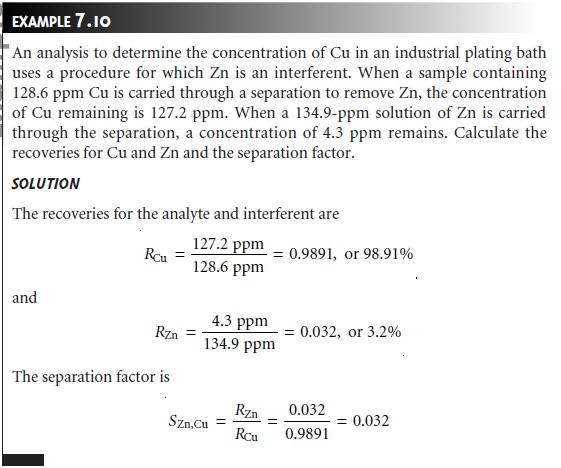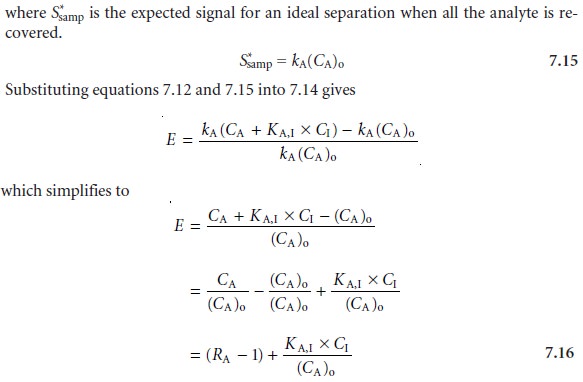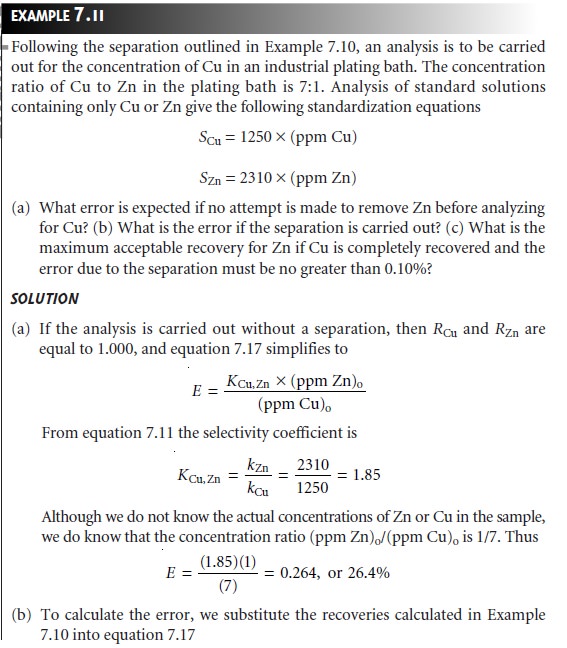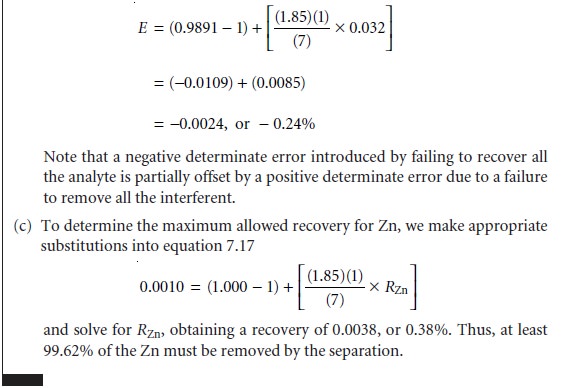Chapter: Modern Analytical Chemistry: Obtaining and Preparing Samples for Analysis
General Theory of Separation Efficiency
General Theory of
Separation Efficiency
The goal of an analytical separation is to remove either
the analyte or the interferent from the sample matrix.
To achieve a separation there
must be at least one signifi-
cant difference between
the chemical or physical properties of the analyte
and inter- ferent. Relying
on chemical or physical properties, however, presents a fundamental
problem—a separation also requires selectivity. A separation that completely
re- moves an interferent may result
in the partial
loss of analyte. Altering the separation to minimize the loss of analyte,
however, may leave behind some of the interferent.
A separation’s efficiency is influenced both by the failure to recover all the ana- lyte and the failure
to remove all the interferent. We define the analyte’s recovery,
RA, as

where CA is the concentration of analyte remaining after the separation, and (CA)o is the analyte’s initial
concentration. A recovery
of 1.00 means
that none of the ana- lyte is lost during
the separation. The recovery of the interferent, RI, is defined in the same manner
 7.13
7.13
where CI is the concentration of interferent remaining after the separation, and (CI)o is the interferent’s initial concentration. The degree of separation is given by a
separation factor, SI,A, which is the change in the ratio
of interferent to analyte
caused by the separation.


In an ideal
separation RA = 1, RI = 0, and SI,A = 0. In general, the separation factor should be approximately 10–7 for the quantitative analysis
of a trace analyte in the
presence of a macro interferent, and 10–3 when the analyte and
interferent are pres- ent in approximately equal
amounts.
Recoveries and separation factors are useful
ways to evaluate
the effectiveness of a separation. They
do not, however, give a direct
indication of the
relative error introduced by failing to remove all
interferents or failing
to recover all
the analyte. The relative error introduced by the separation, E, is defined as
 7.14
7.14

A more useful
equation for the relative error
is obtained by solving equation
7.13 for CI and substituting back into equation
7.16
 7.17
7.17
The first term of equation
7.17 accounts for the incomplete recovery of analyte,
and the second term
accounts for the
failure to remove
all the interferent.


Related Topics